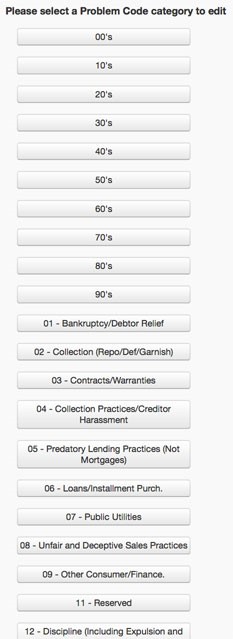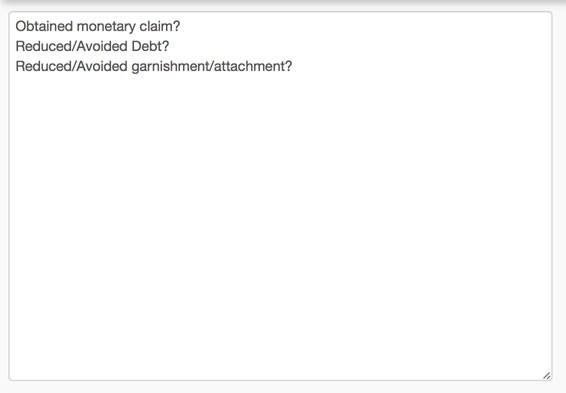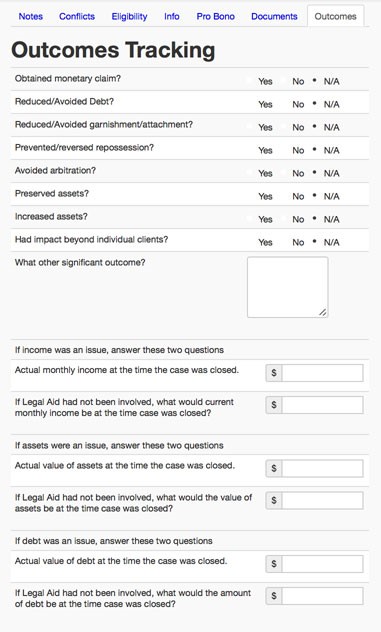Pika CMS
Installing, Configuring, and Using the Outcomes Module for Pika CMS
Pika Software is developing a module that can be used to track case outcomes. The module is available at no additional cost to current support subscribers. Thank you to the Legal Aid Society of Cleveland for their assistance and advice during development of the module.
Installation for Programs Hosted at Pika Software
If your program is hosted at the Pika Software datacenter, and your program is running a version of Pika CMS earlier than 6.05, send an email to support@pikasoftware.com when you are ready for the Outcomes module to be installed on your site. Pika Software staff will run the install for you. Our turnaround time to install the module is usually one business day. No downtime is required to run the install. If your program is running version 6.05 or later, the Outcomes module is already included with your site.
Installation for Programs that Host Their Own Pika CMS Server
If your program’s Pika CMS is hosted on your own server, and your program is running a version of Pika CMS earlier than 6.05, please use the following instructions to install the Outcomes module on your site.
- Schedule a maintenance window with your colleagues. The installation process will generally require downtime while the “cases” table in the database is modified. It could take up to 30 minutes to run, for very large databases. (There are specialized methods that avoid the need for downtime but they are beyond the scope of this guide.)
- Download the Outcomes module from http://pikasoftware.com/files/modules/outcomes.zip (you will need your subscriber username/password handy; the download is password protected).
- Unzip the files.
- Copy the file system-outcomes.php into the main source code folder for your site using SFTP or another secure method.
- Copy the file case-outcomes.php into the “modules” folder on your site using SFTP or another secure method.
- Copy the folder “outcomes” into the “reports” folder on your site using SFTP or another secure method.
- Make sure all users are logged out of the site then run the contents of the file outcomes_module_install.sql on your Pika CMS database. When the database job is completed, users can then log back in.
- The Outcomes module will now be installed and ready to use.
If your program is running version 6.05 or later, the Outcomes module is already included with your site.
Configuring the Outcomes Module
Once installed, the Outcomes modules will allow users to record, for each closed case, economic impacts achieved and program goals achieved. The economic goals are recorded in a set of $6 amount fields that will be standard across all programs using the module. The program goal questions will be defined by each program individually, based on each program’s objectives. Questions will be configured by an administrator using a point-and-click interface; no programming is necessary. Each question can be linked either to a single problem code, or to a category of problem codes (Consumer, Family, etc.). To add a new question, you’ll first go to the Site Map and select the Outcomes Editor (under System Screens). That will bring up the list of problem code categories (see Figure 1). Decide which category your question should appear in, and click on the appropriate button. That will bring up an editor screen for that category (see Figure 2). The editor will list all questions that will be asked on cases that are in the selected Problem Code category. Each question appears on its own line in the editor. To add a question, simply enter the new question on its own line. To delete an existing question, delete the appropriate line. To change the order of questions, edit the questions so they appear in the desired order. Then click “Save” and the changes will take effect immediately.


Using the Outcomes Module
Once installed, the Outcomes module will appear on each case as a new case tab screen labeled “Outcomes.” Click on the tab to begin recording outcomes for the case you are viewing.

At the top, the program goal questions will be listed. Users are provided with three possible answers for each question: “Yes,” “No,” and “N/A” or not applicable. Next, there is an additional input where the user can enter text notes on other outcomes that were achieved which might not fall under any of the predefined questions. Last, the standard economic impact questions are displayed at the bottom so that information can be recorded as well.
